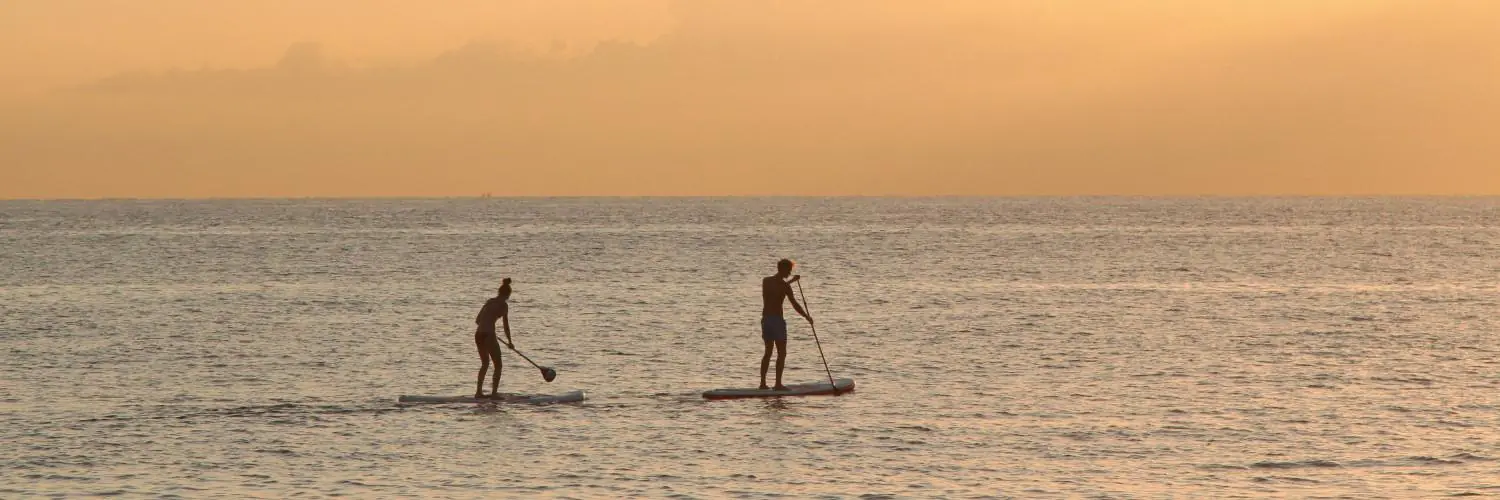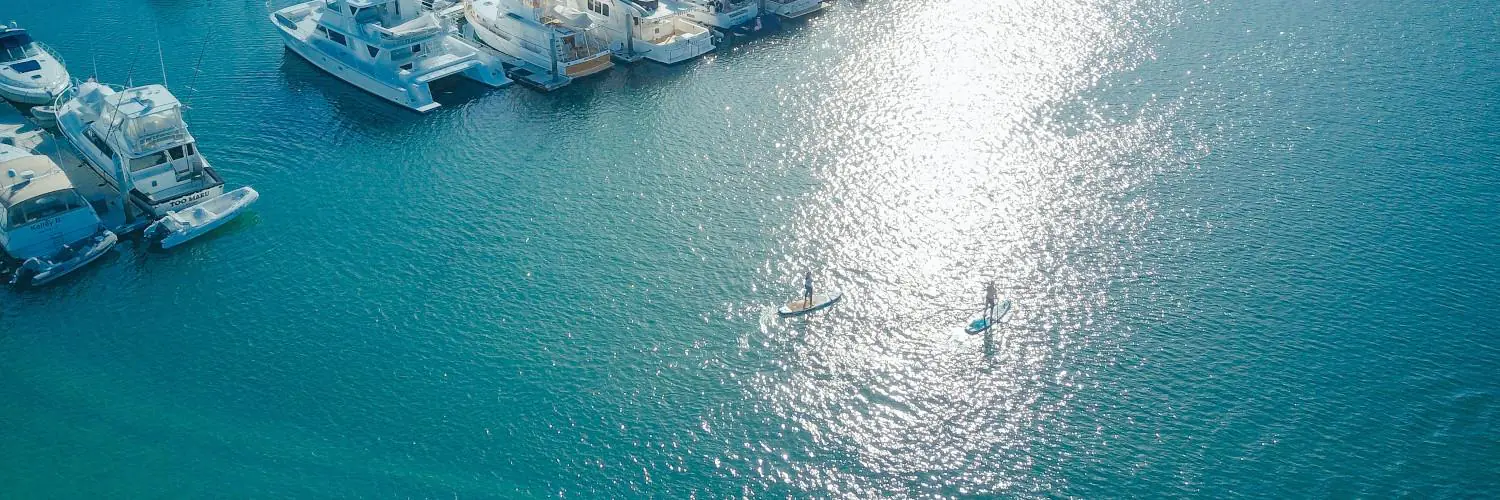Is SUP surfing easier than traditional surfing? Many wonder this as they think about which activity to do. SUP, or stand-up paddleboarding, and surfing share some similarities; both involve riding waves with a board. The ease of learning and mastering each sport are impacted by some key differences.
Generally, beginners find SUP surfing to be easier than traditional surfing. This is largely due to the additional balance and stability provided by the paddle in SUP surfing, which helps individuals stand on the board and maneuver through the water more easily.
Table of Contents
Understanding Surfing and SUP Surfing
Surfing is a popular water sport where a rider, called a surfer, catches and rides waves on a surfboard. Using the force of the wave to propel them forward, traditional surfers also rely on their balance and skill.
SUP surfing, or stand-up paddleboarding surfing, is a variation of surfing where riders stand on a larger board and use a paddle to navigate and propel themselves. This is easier for beginners to pick up as the paddle adds an extra element of stability and balance.
In general, SUP surfing is considered easier to learn than traditional surfing due to the additional balance provided by the paddle. Both sports require surfboards, but SUP surfing boards are typically larger to accommodate standing and paddle usage. The equipment for SUP surfing includes a paddle, which is generally matched to the rider’s height and board size. SUP surfers often use paddles with smaller blades for less resistance and higher cadence strokes.
Unique and enjoyable experiences are provided by both surfing and SUP surfing. While traditional surfers might enjoy the thrill of catching a wave without assistance, SUP surfers can appreciate a more stable and beginner-friendly experience.
Basic Equipment in Surfing and SUP Surfing
Surfing and SUP surfing, though related, require different equipment. In surfing, one uses a surfboard which can vary in size and style, such as a shortboard, longboard, or paddleboard. Surfboards are thinner and generally smaller compared to SUP boards. The key equipment in SUP surfing includes paddleboards, which are wider, longer, and thicker than surfboards.
Beyond boards, both sports require a leash to keep the board attached to the surfer. For cold water conditions, gloves can useful as they provide protection and grip. Crucially, SUP surfing also necessitates a paddle for balance and maneuvering, distinguishing it from traditional surfing.
Stand Up Paddling and Surfing Techniques
Stand up paddle (SUP) surfing and traditional surfing differ in techniques and equipment used. In SUP surfing, a paddle is incorporated to aid in balance and maneuverability. Using the paddle to move and turn, paddling technique also involves standing up on the board. This enables the rider to catch waves more easily and pivot smoothly.
On the other hand, in surfing, the rider uses their arms to paddle and relies on their core strength to maintain balance. The front of the surfboard is very important for moving through waves. Using tricky moves like duck dives and managing breaks well are needed for catching waves effectively. Even though they are not the same, both activities need good skills for a fun time.
Key Differences Between Surfing and SUP Surfing
In comparing surfing and SUP (stand-up paddle) surfing, a few key differences stand out, primarily involving equipment and technique. Siding beginners in finding their balance, larger boards with more volume and stability, are used for SUP surfing. Surfboards, however, tend to be smaller and lighter, emphasizing maneuverability on the waves.
While surfers catch waves by paddling with their arms, SUP surfers utilize a paddle to propel themselves through the water. Extra balance and control are provided by this additional tool.
Another distinction is location, as SUP surfing works in various water conditions, from calm lakes to surf spots with big waves. Conversely, traditional surfing requires suitable waves and currents to generate optimal propulsion. The angle of approach in catching a wave also differs – surfers take a more diagonal path, whereas SUP surfers usually face the wave straight on.
Skills Required for Surfing and SUP Surfing
Surfing requires strong core strength, balance, and practice to master. Surfing needs fast standing up on a board and waiting for good waves. Knowing ho w to read waves and the right timing are key for surfers.
SUP surfing, on the other hand, appears less challenging due to the stand-up paddleboards’ larger size and added stability. Even though you need balance, the paddle helps more, so new players can stand better. You need to move carefully in both and adapt to the water. Both activities need steady moves.
Safety Considerations in Surfing and SUP Surfing
When comparing safety in surfing and stand-up paddleboarding (SUP), both sports have similarities and differences. For surfers, wipeouts and collisions are fairly common. To avoid accidents, they must have core strength and balance. Wearing a leash can prevent losing the surfboard.
In SUP surfing, balance is also crucial, but generally easier to achieve. Utilizing a paddle for stability contributes to reduced wipeout risks. However, the SUP and paddle can potentially cause collisions. A leash is advisable in SUP as well.
To help mitigate risks in both sports, proper knowledge and adherance to safety rules is needed.
Ease of Surfing Versus SUP Surfing for Beginners
For beginners, the learning curve of SUP surfing tends to be more forgiving than traditional surfing. The larger size of a SUP board provides extra stability, making it more suitable for those starting out. Balance and maneuverability is assisted by the paddle used in SUP surfing.
Surfing needs the right waves at beaches, but stand-up paddle (SUP) surfing can be done on different waters, like calm water and rivers. New people are helped by this. In short, being easier for new people and being able to be done in more places, it is also an easier way to start riding waves is SUP surfing.
The Thrill Factor in Surfing and SUP Surfing
The thrill factor in both surfing and SUP surfing stems from the exhilarating experience of riding waves and catching them at their peak. Surfing needs balance, skill, and agility as surfers move their boards to stay in the right spot and ride the wave.
In stand up paddle board surfing, the paddle helps with balance and control, which is not in regular surfing. It is easier for SUP surfers to catch waves and enjoy the peak thrill of wave riding with this additional balance. The fantastic excitement and a rewarding sense of achievement is given by both sports even if the challenges are different.
Conclusion
In a few paragraphs, it is evident that SUP surfing is generally easier to learn than traditional surfing. Beginners find it more manageable due to the additional balance offered by the paddle. Increased stability is provided by the larger board. While both sports have their challenges, SUP surfing has a tamer learning curve, allowing individuals to stand and ride waves sooner compared to surfing.








